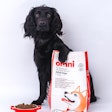
Considering that e-commerce is now a fixture for businesses and consumers, including with pet food, you would think that we understand and know a lot about this distribution and sales channel. However, it still seems to pose a puzzle for pet food companies, retailers and market experts. (The same situation likely applies to other industries and market sectors, too.)
Take the recent announcement that PetSmart and Petco had pulled Hill’s Pet Nutrition products from their stores in Lawrence and Topeka, Kansas, USA (the latter of which happens to be Hill’s headquarters—probably not a coincidence). Some in the pet industry, including Pet Business editor Mark Kalaygian, speculated the move represented the retailers’ pushing back against Hill’s aggressive selling of its products online.
If that’s the case, I find it rather ironic, given that both retailers have invested in ecommerce pet sites themselves in recent years, with PetSmart acquiring Pet360 (including its pet food e-commerce site, PetFoodDirect.com) and Petco buying Drs. Foster and Smith, both in 2014. Those investments are perhaps another example of everyone still struggling to figure out this online sales thing.
According to 1010data, US online pet food sales reached US$760 million last year, an increase of 55% from 2014. Since that’s the only number for online pet food sales available, we have to assume it’s legitimate. Market research organizations don’t seem to have a firm bead on this channel, either; Packaged Facts estimates that online sales are about 1% of overall US pet food sales, or about US$302.7 million if you use the research company’s total of US$30.27 billion for 2015. (The US Bureau of Labor Statistics says pet food sales reached US$26.8 billion for the 12-month period ending in June 2015.) Packaged Facts’ estimate is less than half of what 1010data reports.
Yet even the 1010data number seems low, considering that in 2014, Forrester Research reported online sales for the entire US pet care market (all pet products and services) at US$3.7 billion. That means the US$760 million figure for pet food sales would be only 20.5% of the online pet care market; yet in terms of overall sales (all channels), pet food accounts for over 40% of the total pet care market in the US. Is there really that much of a difference in pet food’s share when it comes to the online channel?
The 20.5% share does correspond somewhat with a 2015 Packaged Facts survey revealing that 12% of all US dog owners and 19% of those living in urban areas regularly had dog food delivered at home (presumably after ordering it online, though they could also order from a local pet store or other retail outlet for home delivery). The numbers for cat owners were 12% and 14%, respectively.
At least there are some data available for the US; on a global level, finding out how much pet food, or even pet products overall, are sold online seems nearly impossible. (If someone has a source for global data, please comment below!)
1010data also provided detailed information on which sites pet owners are buying pet food from: Chewy.com leads that list, accounting for about 50% of US online pet food sales, followed by Amazon.com at 35%. In terms of pet food brands in the US that are selling well online, Blue Buffalo tops the list, with Wellness at number two and Hill’s coming in at number three.
Which leads me to wonder: Will PetSmart and Petco soon pull Blue Buffalo and Wellness products from certain stores?



















